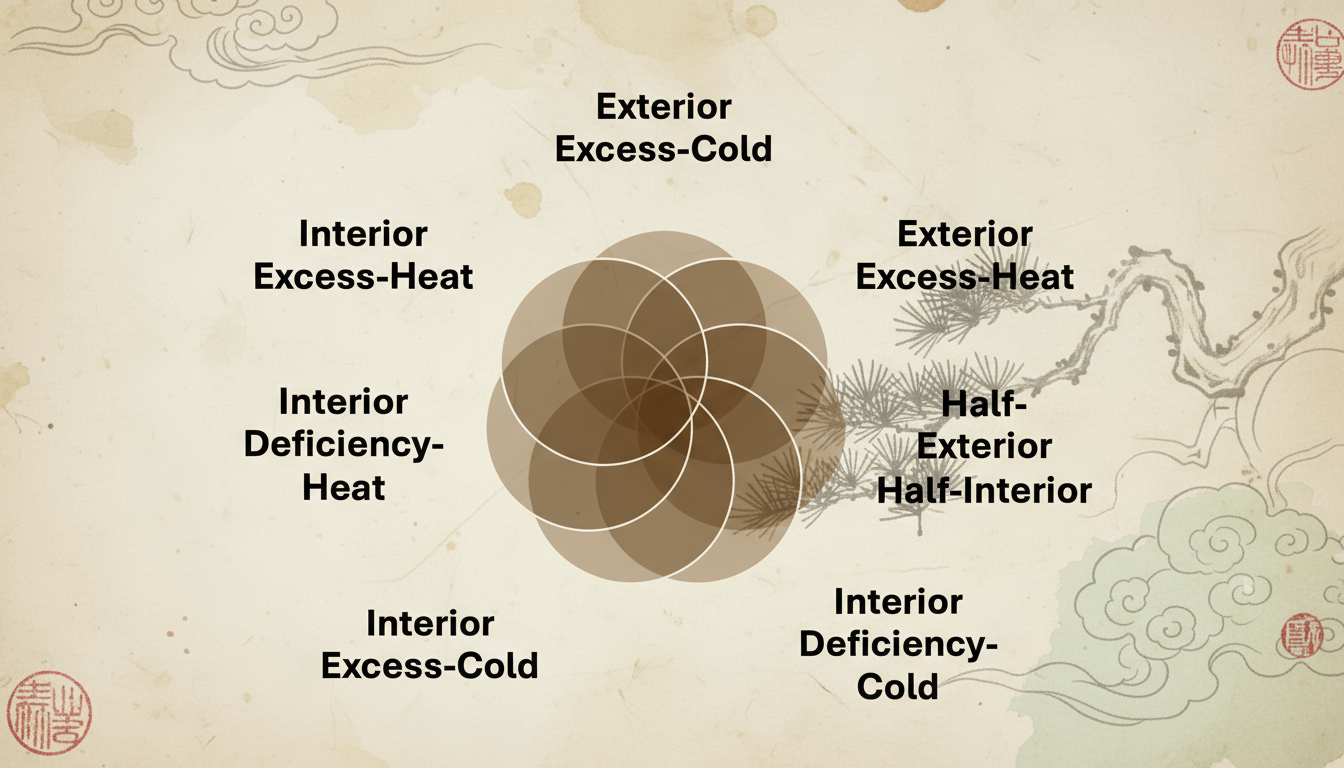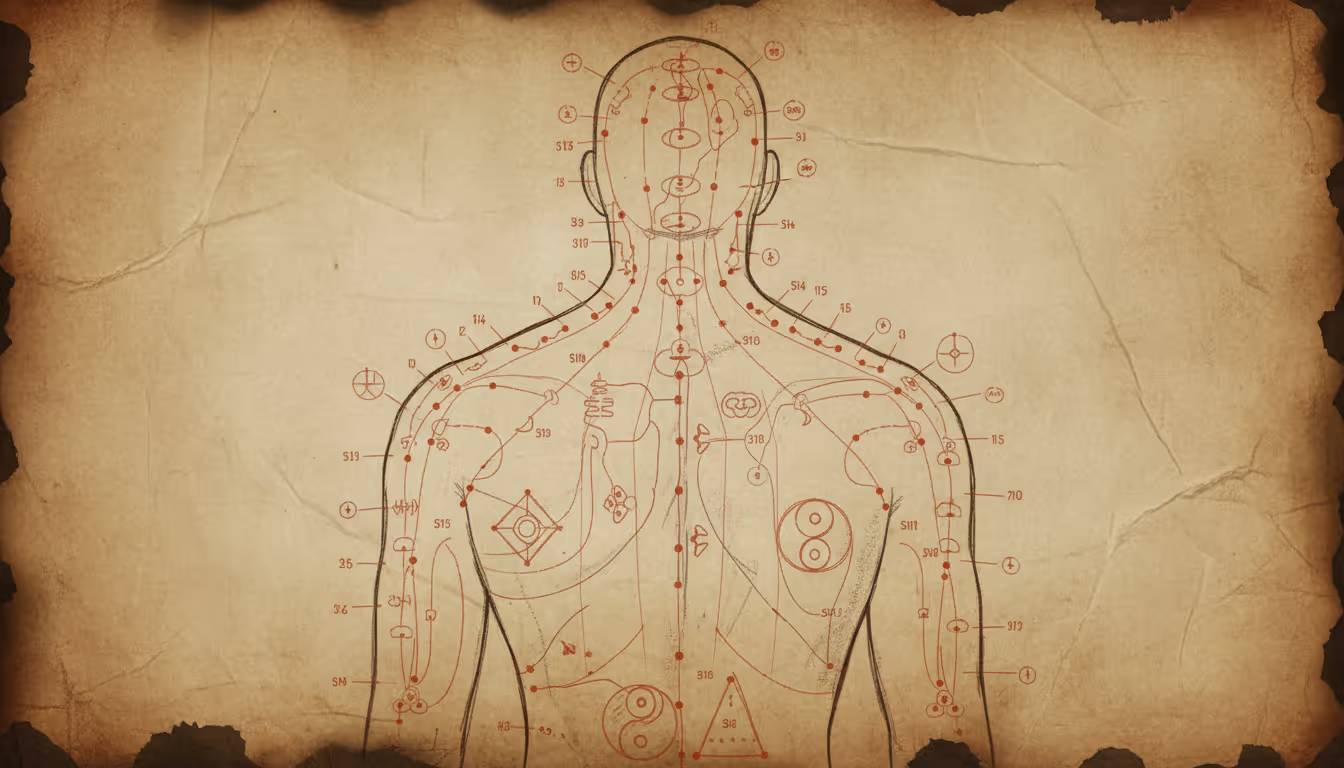Living with chronic pain can feel like trying to solve a puzzle with half the pieces missing. You have the most obvious piece, the pain itself, but what about the other clues? The fatigue that sleep doesn’t fix, the way your joints ache when it rains, the digestive issues that seem to come out of nowhere. In conventional medicine, these can feel like separate, unrelated problems. But what if they were all part of the same story, pointing to a single root cause?
This is the foundational promise of Traditional Chinese Medicine (TCM). Instead of focusing solely on naming a disease, TCM excels at identifying your body's unique "pattern of disharmony." To do this, practitioners use a fascinating framework that connects your symptoms (manifestations) to their underlying cause (systematic pathogenesis). Understanding these two concepts is the first step in decoding the message your body is sending and finding a path toward lasting relief.
What Are Manifestations? Your Body Is Talking to You
In TCM, your primary complaint, whether it's back pain, migraines, or fibromyalgia, is just one clue in a much larger investigation. The entire collection of signs and symptoms you experience is known as your manifestations.
Think of your body like a car. The pain is the "check engine" light. It gets your attention, but it doesn't tell you what's actually wrong. A skilled mechanic looks for other clues:
- Is there a strange rattling sound?
- Is there an odd smell?
- Does the car shake at high speeds?
All these clues together form the car's "manifestations."
Similarly, a TCM practitioner gathers your body's full story. Your chronic pain is the main clue, but they’ll also consider:
- Your temperature: Do you always feel cold, or are you prone to hot flashes?
- Your energy: Are you tired and sluggish, or restless and agitated?
- Your digestion: Is your appetite poor? Do you experience bloating or irregular stools?
- Your sleep: Do you have trouble falling asleep, or do you wake up in the middle of the night?
These seemingly unrelated details are all vital manifestations that, when viewed together, begin to form a coherent picture of your health.
The 'Why' Behind the 'What': Understanding Systematic Pathogenesis
Once a practitioner has gathered all your manifestations, the next step is to understand why they are happening. This is the systematic pathogenesis—a term that simply means the underlying mechanism or process that is causing your symptoms.
Returning to our car analogy, the systematic pathogenesis is the mechanic's final diagnosis. After listening to the rattle, smelling the strange odor, and seeing the check engine light, they determine that a faulty fuel injector is the root cause of all the car's problems.
In the same way, a TCM practitioner connects your cluster of manifestations to an underlying pattern of disharmony. For example, let's say your chronic pain is accompanied by a feeling of coldness, stiffness, and fatigue. The systematic pathogenesis might be identified as "Yang Deficiency," which, in simple terms, means your body's internal furnace is running low. This lack of warmth can slow down circulation and lead to the coldness, stiffness, and dull, achy pain you're experiencing.
This is the beauty of the system: it connects the dots. The pain isn't random; it's a logical outcome of an underlying process.
The Eight Principles: A Diagnostic Map for Your Pain
To organize all these clues, TCM uses a brilliant framework called the Eight Principles. This system acts as a diagnostic map, helping the practitioner classify your pattern based on eight opposing categories: Interior/Exterior, Cold/Heat, Deficiency/Excess, and the overarching Yin/Yang. For chronic pain, the most relevant pairs are often Cold/Heat and Deficiency/Excess.
Cold vs. Heat Patterns
This pair describes the thermal nature of your condition.
- Cold Patterns: Think of this as a "cold snap" inside your body. The manifestations often include pain that feels better with warmth (like from a heating pad), stiffness, and a general feeling of cold. The systematic pathogenesis is that cold has invaded the body, constricting blood vessels and slowing the flow of energy (Qi) and blood, leading to pain.
- Heat Patterns: This is like inflammation or your body's "engine" overheating. The manifestations include pain that feels hot or burning, redness, swelling, and a feeling of restlessness. The systematic pathogenesis is that excess heat is agitating the system and drying up the fluids that lubricate your joints and tissues.
Deficiency vs. Excess Patterns
This pair describes the state of your body's resources.
- Deficiency Patterns: This is like trying to run on a low battery. The manifestations are typically a dull, achy pain that feels better with rest or gentle pressure. It's often accompanied by fatigue, weakness, and a pale complexion. The systematic pathogenesis is an insufficiency of your body's vital substances (like Qi and Blood), so there isn't enough nourishment reaching the painful area.
- Excess Patterns: Think of this as a traffic jam. The manifestations are usually sharp, stabbing, and intense pain that feels worse when you press on it. The systematic pathogenesis is a blockage. Something—like an old injury, chronic tension, or an accumulation of "dampness"—is obstructing the free flow of Qi and Blood, causing a painful backup.
A Patient's Journey: Mark's Story with Arthritis
Mark, a 60-year-old retired construction worker, had been struggling with knee pain for years. His doctor called it "osteoarthritis," but that label didn't help with the daily reality of his pain. It was a deep, heavy ache that was always worse in the morning and on cold, rainy days.
He decided to see a TCM practitioner, who began by asking detailed questions. Mark described the pain, but also the feeling of stiffness and heaviness in his legs. The practitioner noted his pale, slightly swollen tongue, which had a thick white coating.
She explained that his manifestations—the knee pain, stiffness, aversion to cold, and swollen tongue—all pointed to a clear pattern. The systematic pathogenesis, she said, was "Cold-Damp obstructing the channels." In simple terms, years of working in all kinds of weather had allowed cold and dampness to settle deep in his knee joint. This was blocking the flow of energy and blood, just like a logjam in a river, causing the stiffness, heaviness, and pain.
The treatment plan wasn't just about masking the pain; it was about breaking up the logjam. It included acupuncture to restore flow, an herbal formula with warming and damp-draining properties, and lifestyle advice. Mark was encouraged to use a heating pad and incorporate ginger and cinnamon into his diet. Slowly, the morning stiffness began to fade, and he was amazed to find that the weather forecast no longer dictated his pain levels.
Practical Tips for Your Lifestyle
You can start to decode your own body's signals with these simple, practical tips:
- Become a Pain Detective: Keep a simple journal. Does your pain feel better with a heating pad (suggesting a Cold pattern) or an ice pack (suggesting a Heat pattern)? Does it improve with rest (Deficiency) or gentle movement (Excess/Stagnation)?
- Eat for Your Temperature: If you often feel cold and your pain is a dull ache, focus on warming foods. Think soups, stews, ginger, cinnamon, and turmeric. If you feel hot and your pain is inflammatory, opt for cooling foods like cucumber, mint, and leafy greens.
- Check Your Energy Gauge: If your pain is accompanied by deep fatigue (Deficiency), your body is asking for rest and nourishment. If it comes with irritability and tension (Excess/Stagnation), your body is asking for movement. A simple walk or gentle stretching can work wonders.
- Listen to Your Gut: As the source text explains, your internal organs are all connected. If your pain flares up when your digestion is off, it's a valuable clue. This often points to a "Damp" or "Deficiency" pattern that a practitioner can help you address.
Conclusion
In Traditional Chinese Medicine, your symptoms are not random; they are a coherent message. Your collection of manifestations tells the story of "what" is happening, and the systematic pathogenesis explains "why." By using the Eight Principles as a map, a skilled practitioner can decode this story, identify the root pattern of your chronic pain, and create a truly personalized plan to restore balance and vitality. It’s a hopeful and empowering approach that honors the deep wisdom of your own body.
Ready to discover your unique pattern and start your journey toward lasting relief? Schedule your initial consultation with one of our experienced practitioners today.









